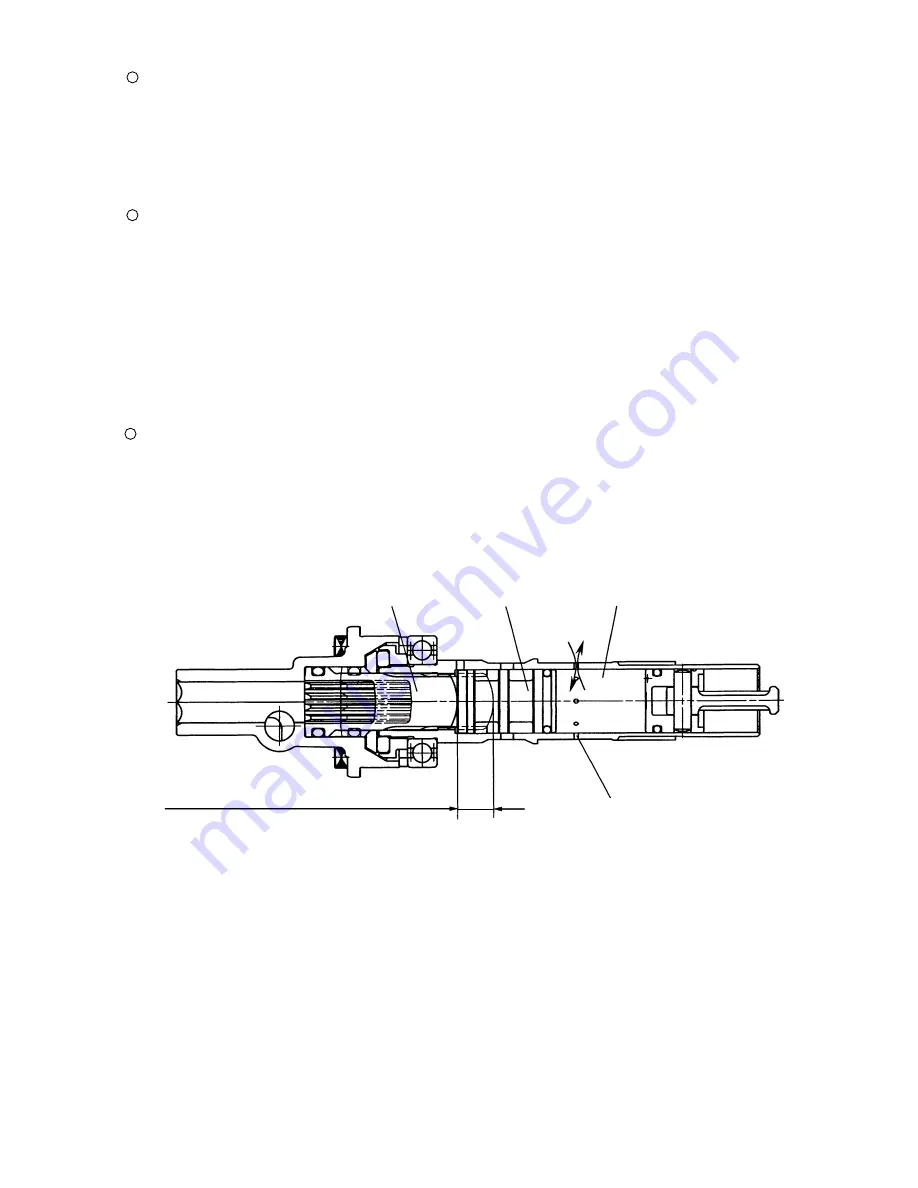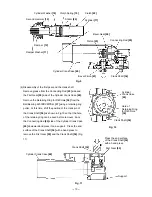
--- 11 ---
Torque transmission
Armature revolution is transmitted to the second gear to rotate the bevel gear via the slip mechanism between
the second gear and bevel pinion axes. Rotation of the bevel gear is then transmitted to the cylinder keyed
thereto through the clutch. Cylinder rotation is transmitted through the spline connection to the second
hammer. Rotation is then transmitted to the drill bit which is fitted into the spline hole of the second hammer.
Striking operation
The rotation of the armature is transferred to the crank shaft and connecting rod, which in turn cause the
piston to reciprocate inside the cylinder. As the piston reciprocates, the changing air pressure inside the air
chamber between the piston and the striker causes the striker to continuously strike against the end of the
second hammer. At the same time, the air-cushion effect within the air chamber absorbs the impact of the
striker. Should the air escape from the air chamber, the air-cushion effect would cease, and the impact energy
would not be absorbed. Accordingly, the o-rings mounted on the striker and piston play an extremely
important role in sealing the air within the air chamber.
Mechanism to prevent idle hammering
The arrangement against idle hammering of this rotary hammer is about the same as for the DH 40FA/
DH 40FB in which, when the drill bit or bull point is not longer pressed against the concrete or similar material,
the second hammer moves to a position shown in Fig. 4 so that the striker is displaced from its hammering
position. This opens the air hole so that piston movement causes no change in air pressure chamber, thus
stopping the hammering action.
Second hammer
Second hammer, striker movements distance
Air hole
Fig. 4
Air chamber
Striker
Содержание DH 40FR
Страница 30: ......





























